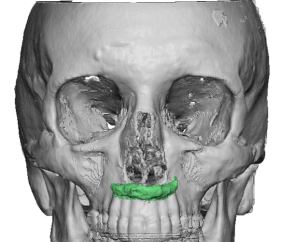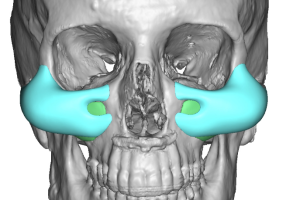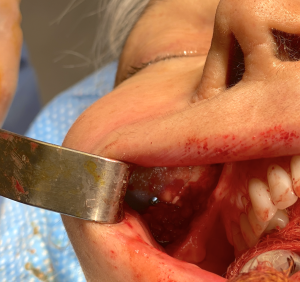Background: While fat injections and synthetic fillers are the most common methods of cheek augmentation, implants still have a useful role to play. But when cheek implants have been placed previously and the patient desires additional volumetric enhancement later, the question becomes what is the best method to do so. The answer to that question is multi-factorial… how long ago were the cheek implants done, are there any problems with the existing cheek implants, does one want a temporary vs permanent additive change, are other facial surgery procedures being planned and what is the age of the patient? In short the answer will vary based on each patient’s situation and desired.
The obvious and simple answer is just do injectable fillers or even fat injections on top of the cheek implants. There is always an adequate subcutaneous tissue layer in which they can be placed. But if the existing cheek implants have issues and the patient does not want to pursue an injectable approach then cheek implant replacement may be the best approach.
When considering cheek implant replacements it is almost always true that a custom design approach offers the most predictable change. The existing cheek implants provide a blueprint from which to make the desired changes as they have a known outcome. A 3D CT scan allows the cheek implants to be seen…provided they are of a material which can be seen radiographically. But what if they can’t be visualized…..
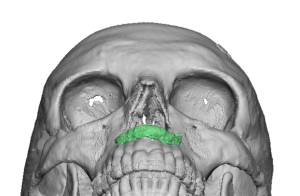



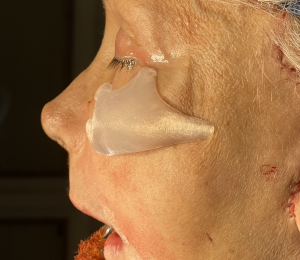
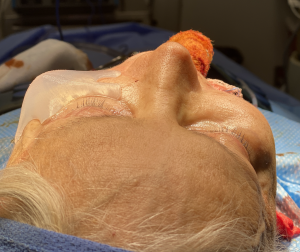
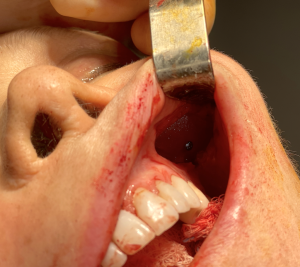
Despite the frequent comments that I hear that Medpor facial implants are impossible to remove I have done it successfully hundreds of times. I didn’t say it was easy as the soft tissue attachments are significantly ingrown but there are intraoperative techniques that make it possible. As always with Medpor implant removals it is going to be traumatic to the surrounding soft tissues so the potential for adjacent nerve injuries are always possible and the postoperative tissue swelling may be significant. If implant replacements are being done at the same time the one ‘advantage’ of removing Medpor implants is that the pocket for the new implants is usually largely made due to the amount of soft tissue dissection needed.
Case Highlights:
1) Medpor cheek implants are often not seen on 3D CT scans…which can make their implant replacement planning less than precise.
2) Extensive dissection and soft tissue releases are necessary for Medpor cheek implant removals which does place the infraorbital and terminal branches of the buccal nerves at risk for injury.
3) Custom cheek implant replacement designing must take into consideration the existing footprint and projection of the indwelling cheek implants.
Dr. Barry Eppley
Indianapolis, Indiana




